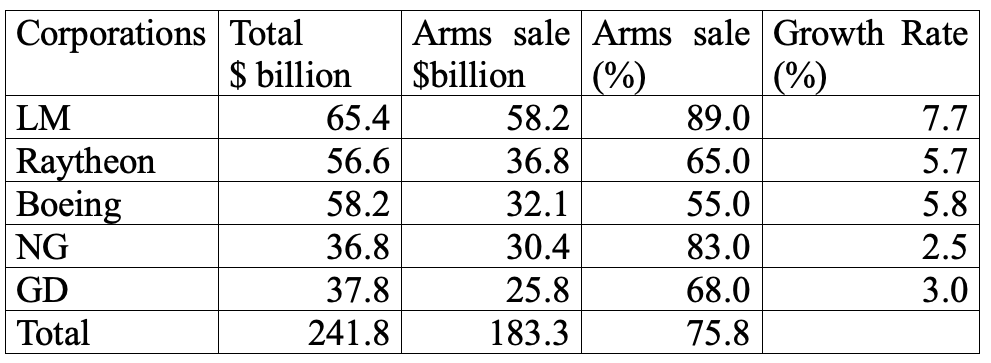America’s Perpetual War: Six Questions
Who are the Beneficiaries of American wars?
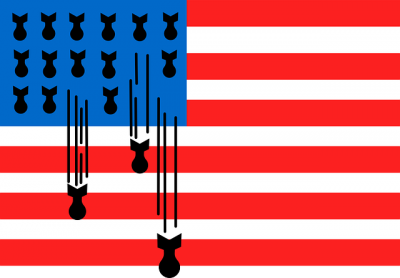
America’s Perpetual War: Six Questions
by Professor (Joseph) Hee Soo Chung
Scroll down to read this article in Korean. AI translation
미국의 영원한 전쟁: 여섯 가지 질문
(조셉) 희수 정 교수에 의해
이 기사를 한국어로 읽으려면 아래로 스크롤하세요. AI 번역
All Global Research articles can be read in 51 languages by activating the Translate Website button below the author’s name.
To receive Global Research’s Daily Newsletter (selected articles), click here.
Click the share button above to email/forward this article to your friends and colleagues. Follow us on Instagram and Twitter and subscribe to our Telegram Channel. Feel free to repost and share widely Global Research articles.
First published on June 12, 2023, this incisive and timely article by the late Professor Joseph Chung (who passed away in October 2024) provides us a carefully documented history of America’s Perpetual War.
May Professor Chung’s Legacy and commitment to Peace Live Forever.
***
Introduction
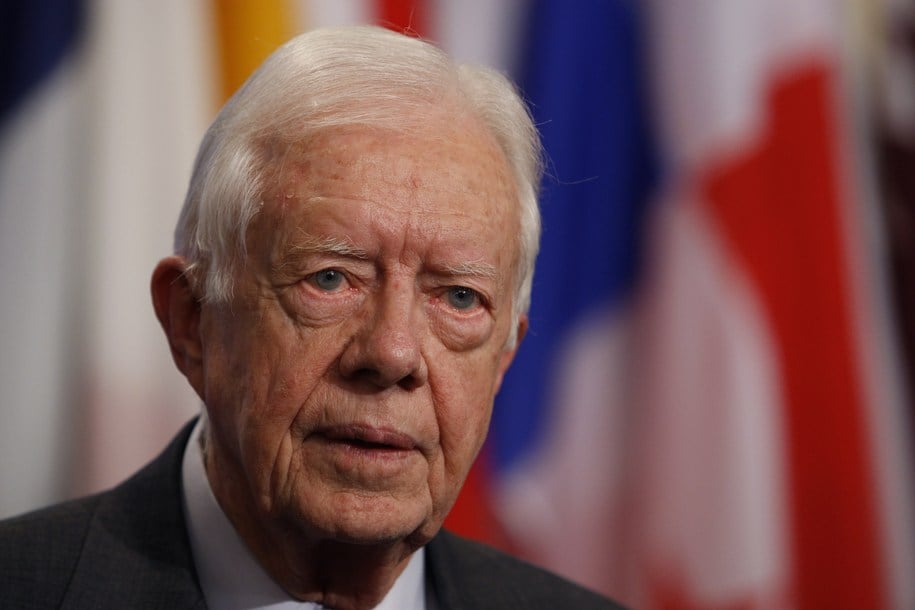 Former American President Jimmy Carter said in 2018 that in America, there were 226 years of wars since its independence which took place 242 years ago thus leaving only 16 years of peace.
Former American President Jimmy Carter said in 2018 that in America, there were 226 years of wars since its independence which took place 242 years ago thus leaving only 16 years of peace.
Since WWII, there were 32 American military conflicts involving dozens of countries. Some of these military conflicts have lasted for over twenty years and some others are still continuing.
In other words, the U.S. is a country of perpetual war. War is terribly destructive human activity. Millions of human beings have been sacrificed. Tens of trillions of dollars worth of housing, school, factories, hospitals and other infrastructure facilities have been destroyed in the countries which have been the target of American military attacks.
The perpetual war has destroyed the very foundation of freedom and democracy; it has prevented healthy and equitable economic development of the world; it has led to the violation of human rights; it has ruined traditional values of many countries and, above all, it has caused lasting human suffering.
America’s multi-trillion dollar perpetual war has denied and deprived millions of Americans of decent income, adequate housing, needed foods, necessary health care, safety on the street, reliable infrastructure facilities, essential education and other goods and services needed for descent living.
Before I go any further, I would like to quote the historical statement of President Dwight Eisenhower.
“Every gun that is made, every warship launched, every rocket fired signifies in the final sense a theft from those who hunger and are not fed, those who are cold and not clothed. This world in arms is not spending money alone, it is spending the sweat of its labourers, the genius of its scientists, the hope of children. (President Dwight Eisenhower address to the North American Society of News editors, April 16, 1953)
In this paper, I am asking the following six questions:
- How many wars has the U.S. undertaken since WWII?
- How are the American wars organized?
- What is the purpose of the American wars?
- Who are the beneficiaries of the American wars?
- What are the negative impacts of the American wars?
- Will the American wars continue?
How many wars has the U.S. undertaken since WWII?
There are undoubtedly several ways of defining war. In this paper, I define war in terms of American military interventions. Defined thus, I have counted 32 wars undertaken by the U.S. since WWII.
I have classified these wars in terms of the following categories:
- invasion (23 cases),
- “civil war” (7 cases), and
- multi-target war (2),
which gives 32 wars that took place since the WWII, in the course of the so-called “post war era”.
There are reasons to believe that there are still many undeclared military interventions conducted by war contractors and Special Operation Forces units spread in 1,000 bases in 191 countries. The following shows the list of American wars.
Invasions,
- Korean War (1950-1953),
- Vietnam War (1955-1975);
- Cuban,Bay of Pigs (1961),
- Lebanon (1982-1984),
- Grenada (1983),
- Libya bombing (1984),
- Tanker War-Persian Gulf (1984-1987),
- Panama (1989-1990),
- Gulf War (1989-1991),
- Iraq War (1991-1993),
- Bosnia War (1992-1995),
- Haiti (1994-1999),
- Kosovo (1998-1999),
- Afghanistan (2001-2021),
- Yemen (2002-present),
- Iraq (2003-2011),
- Pakistan (2004-2018),
- Somalia (2007-present)
- Libya (2011),
- Niger (2013-present)
- Iraq (2014-2021),
- Syria (2014-present),
- Libya (2015-2019).
- [Ukraine, yet to be categorized]
Civil Wars:
Indo-China (1959-1975),
Indonesia (1958-1961)
Lebanon (1958),
Dominican Republic (1968-1966),
Korea DMZ (1966-1969),
Cambodia (1967-1975)
Somalia (1991-present).
Multi-target wars:
Operation Ocean Shield: location, Indian- Ocean (2008-2016), Operation Observant Compass: location, Uganda and Central Africa (2011-2017).
How are the American Wars Organized?
To understand the nature and the implication of the perpetual war in the U.S., it is necessary to introduce the concept of American Pro-War Community (APWC).
In literature and media, we use the notion of military-industrial complex (MIC) to describe the vast system of perpetual U.S. wars. But, actually, the system of perpetual war involves many more individuals and organizations than in the MIC.
The APWC is a tightly knit community promoting its interests at the expense of the wellbeing of ordinary Americans and the interests of the people of the target countries. It is so well organized and so well rooted and so powerful that it is quasi impossible to dissolve it.
The AWPC’s core group comprises the war corporations and the federal government led by the Pentagon, the Congress, the Senate and other government agencies.
There are two supporting groups comprising all sorts of institutions and organizations.
There is the group supporting the supply of war goods and services.
Then, there is the group supporting the creation of demand for war goods and services.
The efficiency of the whole system of producing and selling war goods and services depends on how the core group and the supporting groups can work in harmony together to attain the objectives of wars, namely, the maximization of profit and the intra-APWC sharing of the profit.
Supply of War Goods and Services
The supply of war goods and services is assured by war corporations which produce weapons, building contractors which build all sorts of buildings and manage them, catering services companies that provide foods and drinks for the GIs, information firms which offer information needed for wars and even the academics that offers ideas and technologies.
In the U.S. 40 major war corporations have annual sales of almost $ 600 billion.
The following table shows the importance of the five leading war corporations in U.S.
Table 1. Five major War Corporations: Annual Sales ($ billion) 2022 and Growth (recent years: %)
Note: LM (Lockheed Martin), NG (Northrop Grumman); GD (General Dynamics) Source
 The combined annual sale of the five leading firms in 2022 was as much as $ 241.8 billion of which $183.3 billon was for the sale of military goods and services, or 75.8% of the total sale.
The combined annual sale of the five leading firms in 2022 was as much as $ 241.8 billion of which $183.3 billon was for the sale of military goods and services, or 75.8% of the total sale.
The supply of war goods and services relies on the extensive production chain involving foreign and domestic providers of raw materials and intermediary products. In addition, the academics and information firms offer information, technology and other services needed for the production of weapons.
The following is a list of the well known universities which are deeply involved in American wars. Each one of these universities produces, for the war industry, a variety of war products and services.
In this paper, for each academic institution, just one typical product or service is mentioned.
No less than 70% of university research projects are funded by the Pentagon:
- The Boston College helps the Air Force
- The University of Massachusetts Lowell develops mono-technology for the Army.
- Tufts University improves of soldiers cognitive and physical performance
- MIT is producing so many war goods ns services that it is known as a “war corporation.”
- Columbia University and Brown University develops, for DARPA (Defence Advanced Research Project Agency), the neural engineering system
- Princeton University produces hardware for design and verification of open-source integrated circuit
- Dartmouth University sells machine learning
- Pennsylvania University develops artificial intelligence.
- Stanford University develops technology for chemical warfare and so many other war goods and service that it is considered to be in partnership with war corporations
- Harvard University develops educational materials for the war and it is the main source providing human resources to the war industries. By the way, it produced the napalm bomb widely used in the Korean War, Vietnamese War and other wars
- John Hopkins University makes tools needed for the evaluation of alternative offensive capability needed for battles in air sea, cyberspace
The sad story is that American universities depend on war money so much that they are losing their original mission.

Christian Sorensen (Understanding the War Industry, Clarity Press 2022) has something to say about this problem. He seems to think that universities are neglecting their original mission of producing and diffusing truth.
“But its intricate ties to the War Department show the university’s true colour carrying more about government funding than the nobility of academia.” (Sorenson: p.221)
By the way, I have found many useful information, data and ideas in Sorensen’s book, which is surely a significant addition to the critical literature of perpetual wars.
The information-technology corporations are also actively participating in the American wars. In fact, Amazon, Microsoft, and Google provide, for the military, clout computing which facilitates the reduction of human and material cost of wars.
Demand for War Products and Services
What distinguishes the war economy from the peace economy is the amazing fact that the supply generates the demand.
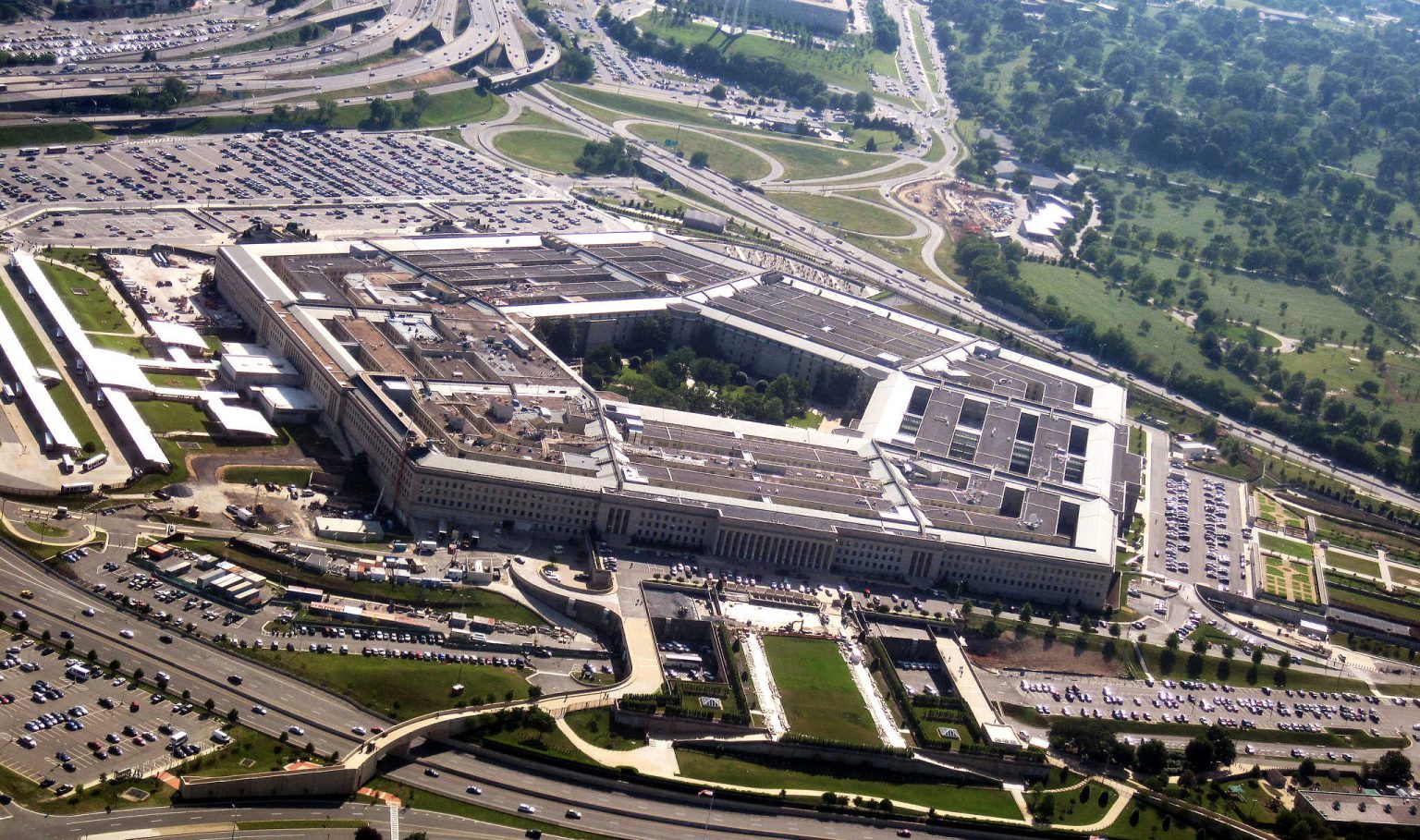 In the American war economy, the final demand for war goods and services is determined by the Pentagon (the Department of Defence) and some foreign countries.
In the American war economy, the final demand for war goods and services is determined by the Pentagon (the Department of Defence) and some foreign countries.
However, the Pentagon does not have all the information needed to estimate the demand for war so that it relies on the information provided by the war corporations.
Therefore, the war corporations which are supplier of war goods and services have the amazing role of determining the demand.
In this way, in the market of war goods and services, the supply determines the demand.
This is the root of perpetual nature of American wars and the making of profit going to the APWC.
Now, to have war, one has to have enemies. But, the war corporations do not have the research capacity to find real enemies or produce fabricated enemies. The role of finding or fabricating enemies goes to the think tanks which are lavishly funded by the war corporations.
When the think tanks find or manufacture enemies, new wars or the continuation of old wars are justified.
Now, on the other hand, the pressure groups put pressure on law makers and policy makers to recognize the identities of enemies produced by the think tanks; this is done through lobbying (bribes giving).
As for the media, they have the role of preparing the mind and the souls of Americans to accept the monstrous defence budget without being aware of the destructive consequences of the perpetual wars.
It goes without saying that both the pressure groups and the media are funded by the war corporations.
The demand for war goods and services created by these pro-war individuals and organizations is translated into the annual defence budget of the U.S amounting, in 2023, to as much as $886 billion.
Imagine this. Washington’s 2023 defence budget is 50% of South Korea’s 2023 GDP of $1.8 trillion. The American defence budget is 40 % of the global defence budget of $ 2.2 trillion.
The big five: Lockheed Martin, Raytheon Technologies, Boeing, Northrop Grumman, General Dynamics gets as much as $150 billion out of the defence budget.
Think Tanks
The think tanks play major role in perpetuating the American wars. Their function is to produce reports and papers to show the seriousness of crisis and the need for increasing military budget so that the crisis can be tackled by military force.
The following shows how some major think tanks are lavishly funded by war corporations. The data are provided by a Global Research paper (Amanda Yee: Six War Managing Think Tank and the Military Contractors that fund them, March 7, 2023).
The Center for Strategic International Studies (CSIS)
The CSIS received in 2022 $100,000 or more from following war corporations: Northrop Grumman, General Dynamics, Lockheed Martin, SAIC, Bechtel, Cummings, Hitachi, Hanhwa Group, Huntington Ingalls Industries, Mitsubishi Corp., Nippon Telegraph and Telephone, Raytheon, Samsung.
The Center for a New American Security (CNAS)
The CNAS received in 2021, $50,000 or more from the following war corporations: Huntington Ingalls Group, Neal Blue, BAE System, Booz Allen, Hamilton Intel Corp, General Dynamics.
Hudson Institute (HI)
The HI got, in 2021, $50,000 or more from the following war corporations: General Atomics, Linden Blue, Neal Blue, Lockheed Martin, Northrop Grumman, Boeing, Mitsubishi.
The Atlantic Council (AC)
In 2021, the AC received $50,000 or more from the following war corporations: Airbus, Neal Blue, Lockheed Martin, Raytheon, and SAIC.
The International Institute for Strategic Studies (IISS)
The IISS was given, in 2021, $25,000 or more by the following war corporations: BAE System, Boeing, General Atomics, Raytheon, Rolls-Royce, Northrop Grumman.
There was a case where a think tank expressed an “expert opinion” in order to protect the interest of its sponsor (war corporation). It happened on August 12, 2021.
The huge military contractor CACI which had a contract of $907 million for 5 years in Afghanistan was disappointed of the U.S. withdrawal from Afghanistan, which meant its profit loss.
Its think tank was the Institute for the Study of War (ISW). The president of ISW, Kimberly Kagan declared that the U.S. withdrawal would make Afghanistan become a second ground of Jihadism. By the way, retired General Jack Keane is a member of IWS.
Pressure Group
The pressure groups are led by individuals well connected to war corporations, the Pentagon and the congress. The following is the partial list of pressure groups.
- The Aerospace Industry Association(AIA): Its CEO is the former vice-president of a company producing rockets. AIA represents more than 340 aerospace and defence corporation
- The National Defence Industry Association (NDIA) has 1,600 members
- The political Action Committee
- The Association of United States Army(AUSA): It produces Industry Guide for war corporations
- Business Executives for National Security (BENS), It is composed of non-profit 450 business executives who discuss security issues
- The Association of Old Crows (AOC), It is a brotherhood of electronic war veterans and leaders of war. It is supported by war corporations such as AECOM and Raytheon
- The American Institute of Aeronautics and Astronomics (AIAA)
- The National Security Resource Board
- The War Dept Defence Policy Board
Pro-War Media
Most of American media are pro-war. There are several reasons why the media are not critical of the perpetual war, if not being outright pro-war.
First, Being corporate media, they are mainly concerned with making money rather than being concerned with the collective wellbeing of the American society.
The Corporate Media including CNN, MSMBC, Fox News attach program priority to the rating.
They have no opinion about the awfully destructive consequences of the perpetual war. Even if they have some useful opinions they do not dare to express them. When they express an opinion, they are usually referring to the opinion of the elite class.
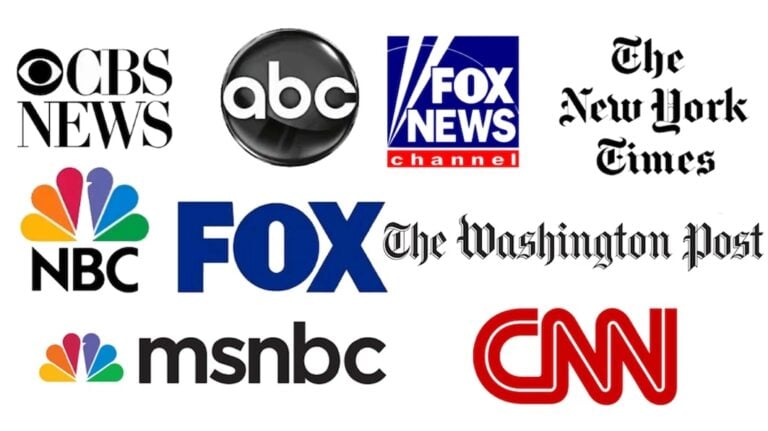 Second, it has been the long tradition in the U.S. that the media do not criticize the government.
Second, it has been the long tradition in the U.S. that the media do not criticize the government.
Third, the government censor the media, especially, the off-line media.
Fourth, the numbers of media are directly related to the war industry. For example, in Defence News, T. Michael Mosely, retired 4-star Air Force general wrote in April 2019 that the Air Force was woefully under equipped.
There is a long list of pro-war media mostly armed forces related media.
Fifth, war corporations openly put pressure on the media not to mention the root of war. For example,
“General Dynamics wants corporate media never to question the root cause of the war.” (Sorensen p: p.72)
Sixth, the Smith Mundt Modernization Act of 2012 allows greater propaganda on corporate media.
To sum up, the demand for war is formed by the coordinated pro-war opinions created by the war corporations, the think tanks, the pressure groups and the media.
These opinions are transmitted to the Pentagon, which determine the size of financial and human resources to be allocated to the war.
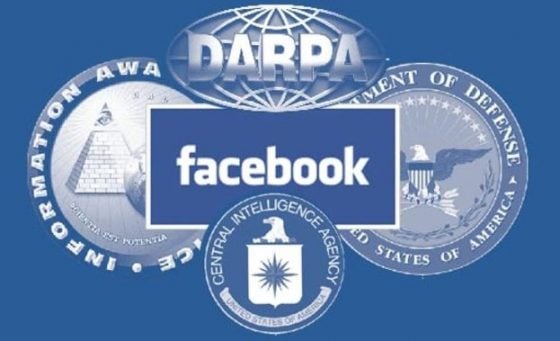 The remarkable coordination among these individuals and organizations looks like a well prepared symphony orchestra.
The remarkable coordination among these individuals and organizations looks like a well prepared symphony orchestra.
The think tanks play violin to make sweet sound for the war corporations;
The pressure groups play trumpet to make the sound louder;
The media play drums to draw attention of the public to the necessity of wars.
All these players are conducted by the war corporations.
What is the purpose of American wars?
There can be defensive purposes and offensive purposes of war. The defensive purposes can include the protection of national territory and national values such as religion, democracy and national assets representing the national tradition.
Then, there can be offensive purposes of war which can include the imperial invasion of a foreign country in order to change the political and economic regime, change religion, to appropriate the foreign country’s natural resources and maintain America’s hegemonic domination.
 There is one more offensive purpose, namely,
There is one more offensive purpose, namely,
In all probabilities, the defensive purposes are not relevant. No country dares to challenge American territory and its values. On the other hand, all of offensive purposes are relevant.
However none of the offensive “purposes” of American wars seem to have been attained.
- Christianity had for a long time hidden its presence.
- American democracy is falling rapidly.
- Regime-change war has ended up with regime destruction.
- America’s global hegemony has to overcome several challenges.
As for the expropriation of foreign countries natural resources, American imperialism should have been a success made possible through the worldwide value chain. Its main beneficiaries are American multinational corporations.
Now, with regard to the impact of the Perpetual American war on the American economy, the usual analysis model is military Keynesianism. A series of economic studies show that it can have a short run positive effect on the national economy, but in the medium term, it will harm the economy’s growth potential. In other words, war is harmful to the national (civilian) economy.
“After initial demand stimulus, the effect of increased defence spending turns negative around six years .After 10 years of higher defence spending, there would be 464,000 jobs less than the base line scenario with lower spending.” (Dean Baker, economist quoted in journals.openedition.org)
In short, American wars are not needed for the realization of defensive objectives.
Nor are they useful means for the materialization of offensive ends with the exception of the expropriation of natural resources of foreign countries.
Then, why does the U.S. continue its wars?
If the war continues despite its dubious results, there must be some people who find in the war some benefits. The inevitable conclusion is that these same people are the members of the American Pro-War Community (APWC).
Who are the Beneficiaries of American wars?
In order that the AWPC receive benefit from wars, the profit of war corporations must be abnormally maximized. In fact, the profit of war corporations must be very high due to these reasons.
First, war corporations receive the Pentagon’s research grants and tax incentives from the federal government.
Second, the use of Artificial Intelligence-based production systems can save greatly the cost of the war corporations’ production of war goods and services.
Third, war corporations enjoy the quasi monopoly status through corporate merging in the sector of highly specialized weapon production. The merging of Lockheed with Martin is a typical example.
Fourth, in a situation of Pentagon-war corporation collusion, the Pentagon’s acceptance of a high contractual price is of significance.
The Privatization of War. The Everlasting Corruption Culture
 Once the high corporate profit is assured, the next step of keeping perpetual wars is the intra-AWPC sharing of the corporate profit.
Once the high corporate profit is assured, the next step of keeping perpetual wars is the intra-AWPC sharing of the corporate profit.
This is done through bribes. Having received bribes, pro-war policy makers and pro-war law makers must go along with war corporations lobbying in favor of “more wars”.
Bribes are given to the policy makers and law makers so that they accept what the war corporations ask for. This is the beginning of an everlasting corruption culture.
The following cases illustrate some of the dimensions of the corruption culture:
In 2012, the war corporations gave $30 million and in 2014 they gave $ 25.5 million to the Senate Armed Service Committee.
Christian Sorensen shows the source of corporate funds given to the 25 members of the Senate Armed Services Committee. The following gives some examples.
- John McCain (R): General Electric, Raytheon and several other war corporations
- Jeanne Shaheen (D): Boeing General Electric
- Lindsey Graham (R): Northrop Grumman, Raytheon
- Bill Nelson (D): Lockheed Martin, Raytheon
A former CIA lobbyist made a meaningful statement regarding the state of corruption:
“Years of legalized bribery had exposed me to the worst elements of our country’s political working. Not even my half million-a-year salary could weigh my conscience…Today, most lobbyists are engaged in a system of bribery but it is legal kind, the kind that runs rampant in the corridors of Washington.” (Sorensen: p.65)
For the last presidential election, Lockheed Martin donated $ 91 million. Fifty eight members of the House Armed Service Committee received in average $79,588 from the sector (war industry), or three times more than other representatives. Lobbying expenditures by the member of the warmongering community was $247 billion during the last two presidential elections.
The Swinging-Door Relationship
However, in addition to the bribe system, there is the swinging-door relationship between the war industry and the Pentagon.
The swinging-door relations result in the industry’s direct participation in the defence policy making. In fact, the decision makers in the Pentagon and the decision makers in the war industry are the same people.
The first swinging door allows the two way traffic of corporation leaders and the Pentagon leaders. Here are some cases of swinging door system of decision making.
- Ryan McCarthy assistant to Robert Gate, War Secretary went back to Lockheed Martin. He is now Under Secretary of Army.
- General James Mattis is now on the Board of Directors of General Dynamics, then, he became Secretary of War, then back to General Dynamics
- An Assistant Secretary of War was president of Goldman Sachs focus on oil and gas
- An administrator of the Defence Technical Information (DTC) has directorship in multiple corporations
- The Under Secretary of War in charge of the finance of the Pentagon was partner of an accounting firm, Kearney which has strong business with the Pentagon
- Lester Lyle, director general of General Dynamics was Air Force National Commander
- Wilbur Ross, US Commerce Secretary had the following members of his advisory group: CEOs of Apple, Visa, Walmart, Home Depot, IBM, US Chamber of Commerce, the Association of Community College.
There are also what we might describe as the “three way traffic swinging-doors”, namely
“The Corporations, Pentagon and Think Tanks Triad”
Some of the key members of the Washington war camp work for war corporations, the Pentagon and think tanks. In this dynamics, The Center for Strategic and International Studies (CSIS) is often implicated.
The bribery system and the swinging-door apparatus of policy making is necessarily supportive of the culture of corruption.
“Corporate America as a whole was also corrupting hearts and minds numbing the public with entertainment and deluging with commercialism.” (Sorensen: p.60)
What are the negative impacts of American wars?
There are internal and external negative impacts of American wars. The internal negative impacts of the American wars include human cost and economic cost.
The human cost of American perpetual war is high. Nobody knows how many Americans are killed or wounded. But some estimates say that as many as 50,000 Americas have been wounded in addition to tens of thousands of GIs who have been killed due to the perpetual wars.
“There is no honest accounting of the where how and why we are killing-how United States citizens are being protected and what security benefits are actually accruing to the United States in continuing perpetual war.” (William M. Arkin: Newsweek)
The economic and social costs are high. The destruction of America’s potential economic growth is attributable to insufficient investments in education, health and infrastructure.
The U.S. invests almost $1.0 trillion a year to sustain its perpetual wars, forcing Americans to contribute $2,200 a year (in taxes) to finance the wars.
The opportunity cost of American wars is high. The opportunity cost means investments which have been avoided due to the wars.
Here are some examples of “opportunity costs”:
- $70 billion to fight poverty;
- $42 billion to repair 43, 586 deficient bridges;
- $10.6 billion for the proposed program for the Center for Disease Control;
- $11.9 billion for the Environment Protection Agency;
- $17 billion for children who are starving.
Besides, Washington needs money to save 100,000 Americans who die every year from drug overdoses.
Washington must finds way to eliminate street killings which happen four times every single day.
More than 10 % of Americans are not covered by medical insurance. Even those who do have medical insurance, the insurance cost is beyond the reach of the majority of Americans.
Another serious internal negative impact of the war is increasing public debt.
In 2023, the U.S. public debt is $ 31 trillion as against $ 27 trillion for its GDP. This means that public debt is 14.8% more than GDP.
A good part of this debt is attributable to wars. In fact, the Iraq war produced a U.S. public debt of $3 trillion.
This is a very dangerous situation, because with this kind of public debt, the country’s fiscal policy becomes utterly useless.
Now, as for the external negative impact of American wars, the impacts are beyond description.
Almost 1.3 million people were killed in Iraq, Afghanistan and Pakistan alone, not to mention. the flow of millions of refugees.
Over the years, the perpetual American wars have ruined national economies; they have undermined religions and traditional values; they took away the hope for better life of the people of the countries which have been the targets of American wars.
What is really disturbing is this. The American wars are supposed to promote and keep world safer. But, in reality, the American wars have instead worsened global security and safety of civilians.
“After two decades of fighting, in fact, not one country in the Middle East – not a country in the world – can argue that it is safer than it was before 911. Every country that is now a part of the expanding battle field of perpetual war is a greater disaster than it was than decade ago.” (newsweek.com ibid).
So, who are benefitting from American wars? Sorensen offers an answer.
“The only people who ultimately benefit from militarized drugs war are perfidious flag officers, the D.C. regime executives, war corporations and a few native American elites.” (Sorenson: p. 298)
I may go further. I say that the beneficiaries are the members of the APWC.
Will the American wars continue?
Despite its terribly negative impact, these wars will continue, because it is beneficial to the APWC.
The perpetual war requires the following strategies: perpetual existence of enemies on the one hand and, on the other, the adoption of invisible and politics-free war.
If there is no demand for the war, there will be no war.
Hence, in order that the war perpetuates, there must be sustained demand for war.
But, in order that there be demand for war, there must be crisis and there should be crisis making countries or individuals. These countries and individuals become enemies of America.
There have allegedly been several waves of military crises in the eyes of APWC.
The first wave of crisis: the spread of communism, 1950-1989
The second wave of crisis: the threat of terrorism, 1990-present
The third wave of crisis: danger of nuclear proliferation, 1950-present
The fourth wave of crisis: the war on drugs, 1990-present
The fifth wave of crisis: human right violations 2001-present
Thus, there are several ongoing crisis and enemies. Hence, the APWC has little to be concerned with the lack of enemies.
According to William M Arkin, Washington has bombed or is bombing these countries: Afghanistan, Iraq, Syria, Pakistan, Somalia, Yemen, Libya, Niger, Mali, Uganda Moreover, there are ten more countries which might be bombed. These are mostly African countries including Cameron, Chad, Kenya and 7 other countries.
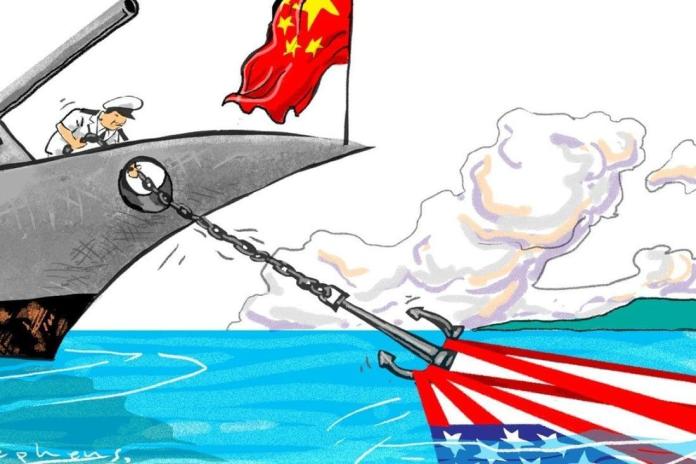 Moreover, the APWC is used to invent enemies. The probable next crisis target could be the “Yellow-Peril crisis” involving China and other Asian countries.
Moreover, the APWC is used to invent enemies. The probable next crisis target could be the “Yellow-Peril crisis” involving China and other Asian countries.
President, Joe Biden has decided to intervene in case of “crisis” in foreign countries even without the authorization of the countries involved. This can provide a lot of potential enemies.
Anyway, as far as the existence of enemies is concerned, the AWPC has little to be worried about. There will be plenty of them, if not, the APWC will invent them.
For instance, not-being pro-U.S. could be treated as crisis and crisis-maker, categorized as an enemy of America.
The next hurdle to overcome for APWC is to tackle the anti-war movement in the U.S. and elsewhere in the world.
The solution is to find ways of making wars invisible, saving American lives but profitable. This can be done through the use of unmanned weapons and production cost saving by using AI-based technology, which allows long-distance warfare by virtue of “hub-spoke” war strategy under which one can attack the enemy without being present at the battle ground.
More and more, war is undertaken by a system of hub-spoke. In the current war against terrorism, hubs are located in several Middle East countries, Kuwait being the Army hub and Bahrain being the Navy hub. The spokes are spread throughout the world, especially in the Middle East and Africa.
William M. Arkin describes the efficiency of the hub-spoke model of war.
“It is so little understood, so invisible, so efficient,, even so as four successive presidents have promised and then tried to stop warfare, the spokes have grown and expanded.”
The reason for developing this type of warfare is the need for being free from anti-war public and anti-war politics.
“The War Brings Money”. The Vicious Circle of Human Greed
But the most important reason for the perpetuity of America wars is the vicious circle of human greed.
- The war brings money;
- Money invites wars;
- Wars bring in more money;
- More money leads to even more wars and ad infinitum.
This is the vicious circle of human greed.
Since human greed has no boundary, American wars will remain perpetual.
 Thus, American wars can go on and on until there will be no more valuable enemies.
Thus, American wars can go on and on until there will be no more valuable enemies.
In other words, the war will go on until the total destruction of the world.
So, to save the world, the perpetual American wars should be stopped.
*
Note to readers: Please click the share button above. Follow us on Instagram and Twitter and subscribe to our Telegram Channel. Feel free to repost and share widely Global Research articles.
Dr. Joseph H. Chung is professor of economics at the University of Quebec in Montreal (UQAM), he is member of the Center of Research on Integration and Globalization of (CEIM-UQAM). He is Research Associate of the Centre for Research on Globalization (CRG).
Featured image is from The Unz Review
AI 번역
미국의 영원한 전쟁: 독특한 질문
(조셉) 희수 정 교수에 의해
모든 글로벌 리서치 기사는 저자 이름 아래에 있는 웹사이트 번역 버튼을 활성화하면 51개 언어로 읽을 수 있습니다.
글로벌 리서치의 일간 뉴스레터(선택된 기사)를 받아보시려면 여기를 클릭하세요 .
위의 공유 버튼을 클릭하여 이 기사를 친구와 동료에게 이메일/전달하세요. Instagram 과 Twitter 에서 팔로우 하고 Telegram 채널 을 구독하세요 . Global Research 기사를 자유롭게 리포스트하고 널리 공유하세요.
2023년 6월 12일에 처음 출판된 이 통찰력 있고 시의적절한 기사는 2024년 10월에 세상을 떠난 고(故) 조셉 정 교수 가 쓴 것으로 , 미국의 끊임없는 전쟁에 대한 주의 깊게 기록된 역사를 제공합니다.
정 교수님의 유산과 평화에 대한 헌신이 영원히 지속되길 바랍니다.
***
소개
 전 미국 대통령 지미 카터는 2018년에 미국은 242년 전에 독립한 이후로 226년간 전쟁을 치렀고, 평화로운 기간은 단 16년뿐이라고말했습니다 .
전 미국 대통령 지미 카터는 2018년에 미국은 242년 전에 독립한 이후로 226년간 전쟁을 치렀고, 평화로운 기간은 단 16년뿐이라고말했습니다 .
2차 세계 대전 이후로 수십 개국이 개입한 32건의 미국 군사 갈등이 있었습니다. 이러한 군사 갈등 중 일부는 20년 이상 지속되었고 일부는 여전히 계속되고 있습니다.
다시 말해, 미국은 끊임없는 전쟁의 나라입니다. 전쟁은 끔찍하게 파괴적인 인간 활동입니다. 수백만 명의 인간이 희생되었습니다. 수십조 달러 상당의 주택, 학교, 공장, 병원 및 기타 인프라 시설이 미국 군사 공격의 표적이 된 국가에서 파괴되었습니다.
끊임없는 전쟁은 자유와 민주주의의 기반을 파괴했습니다 . 그것은 세계의 건강하고 공평한 경제 발전을 방해했습니다. 그것은 인권 침해로 이어졌고, 많은 나라의 전통적 가치들을 파괴했으며, 무엇보다도 오래 지속되는 인간 고통을 초래했습니다.
수조 달러에 달하는 미국의 끊임없는 전쟁으로 인해 수백만 명의 미국인이 적정 소득, 적절한 주택, 필요한 식량, 필수적인 건강 관리, 거리의 안전, 신뢰할 수 있는 사회 기반 시설, 필수 교육 및 인간다운 삶에 필요한 기타 상품과 서비스를 얻지 못하고 박탈당했습니다.
더 나아가기 전에 드와이트 아이젠하워 대통령 의 역사적 발언을 인용하고 싶습니다 .
“만들어진 모든 총, 발사된 모든 군함, 발사된 모든 로켓은 궁극적으로 굶주리고 먹을 것이 없는 사람들, 추워서 입을 것이 없는 사람들로부터 훔친 것을 의미합니다. 무장한 이 세계는 돈만 쓰는 것이 아니라 노동자들의 땀, 과학자들의 천재성, 아이들의 희망을 쓰고 있습니다. (드와이트 아이젠하워 대통령이 북미 뉴스 편집자 협회에 한 연설, 1953년 4월 16일)
이 논문에서 저는 다음의 여섯 가지 질문을 던지고자 합니다.
- 2차 세계 대전 이후 미국은 몇 번의 전쟁을 치렀나요?
- 미국의 전쟁은 어떻게 조직되나요?
- 미국 전쟁의 목적은 무엇인가?
- 미국 전쟁의 수혜자는 누구였는가?
- 미국 전쟁의 부정적인 영향은 무엇인가?
- 미국의 전쟁은 계속될까?
2차 세계 대전 이후 미국은 몇 번의 전쟁을 치렀나요?
의심할 여지 없이 전쟁을 정의하는 방법은 여러 가지가 있습니다. 이 논문에서 저는 전쟁을 미국의 군사 개입의 관점에서 정의합니다. 이렇게 정의한 결과, 저는 2차 세계 대전 이후 미국이 수행한 전쟁을 32개로 집계했습니다.
저는 이러한 전쟁을 다음과 같은 범주로 분류했습니다.
- 침략 (23건)
- “내전” (7건) 과
- 다중 대상 전쟁 (2),
이는 2차 세계 대전 이후 소위 ‘전후 시대’ 에 일어난 32개의 전쟁을 나타냅니다.
191개국 1,000개 기지에 분산된 전쟁 계약자와 특수 작전 부대가 수행한 선언되지 않은 군사 개입이 여전히 많이 있다고 믿을 만한 이유가 있습니다. 다음은 미국의 전쟁 목록을 보여줍니다.
침략 ,
- 한국전쟁(1950-1953),
- 베트남 전쟁 (1955-1975);
- 쿠바, 돼지의 만(1961),
- 레바논 (1982-1984),
- 그레나다(1983),
- 리비아 폭탄 테러(1984년)
- 탱커 전쟁-페르시아만(1984-1987),
- 파나마(1989-1990),
- 걸프 전쟁(1989-1991)
- 이라크 전쟁(1991-1993),
- 보스니아 전쟁(1992-1995)
- 아이티(1994-1999),
- 코소보 (1998-1999),
- 아프가니스탄(2001-2021),
- 예멘(2002-현재),
- 이라크 (2003-2011),
- 파키스탄(2004-2018),
- 소말리아(2007-현재)
- 리비아(2011),
- 니제르(2013-현재)
- 이라크(2014-2021),
- 시리아(2014-현재),
- 리비아(2015-2019).
- [우크라이나, 아직 분류되지 않음]
내전 :
인도차이나(1959-1975),
인도네시아 (1958-1961)
레바논(1958),
도미니카 공화국 (1968-1966),
한국 DMZ (1966-1969),
캄보디아 (1967-1975)
소말리아(1991년~현재).
다중 타겟 전쟁 :
오션 실드 작전: 지역, 인도양(2008-2016), 옵저번트 컴퍼스 작전: 지역, 우간다 및 중앙아프리카(2011-2017).
미국의 전쟁은 어떻게 조직되나요?
미국에서 끊임없이 벌어지는 전쟁의 본질과 그 의미를 이해하려면 미국의 전쟁 찬성 공동체 (APWC)라는 개념을 소개할 필요가 있습니다.
문학과 미디어에서 우리는 군산복합체 (MIC) 라는 개념을 사용하여 미국의 영구 전쟁이라는 광대한 시스템을 설명합니다. 하지만 실제로 영구 전쟁 시스템은 MIC보다 훨씬 더 많은 개인과 조직을 포함합니다.
APWC는 일반 미국인의 복지와 대상 국가 국민의 이익을 희생하여 자신의 이익을 증진하는 긴밀한 커뮤니티입니다. 조직이 잘 되어 있고 뿌리가 깊으며 강력해서 해체하기가 거의 불가능합니다.
AWPC의 핵심 그룹은 국방부, 의회, 상원 및 기타 정부 기관이 이끄는 전쟁 기업과 연방 정부로 구성됩니다.
모든 종류의 기관과 조직으로 구성된 두 개의 지원 그룹이 있습니다.
전쟁 물자와 서비스의 공급을 지원하는 단체가 있습니다.
그리고 전쟁 물자와 서비스에 대한 수요 창출을 지지하는 단체도 있습니다.
전쟁 물자와 서비스를 생산하고 판매하는 전체 시스템의 효율성은 핵심 그룹과 지원 그룹이 전쟁의 목표, 즉 이윤 극대화와 APWC 내부 이윤 공유를 달성하기 위해 얼마나 조화롭게 일할 수 있느냐에 달려 있습니다.
전쟁물품 및 서비스 공급
전쟁 물자와 서비스의 공급은 무기를 생산하는 전쟁 기업, 온갖 건물을 짓고 관리하는 건설업체, 군인들에게 음식과 음료를 제공하는 케이터링 서비스 회사, 전쟁에 필요한 정보를 제공하는 정보 회사, 심지어 아이디어와 기술을 제공하는 학계에 의해 보장됩니다.
미국에서는 40개의 주요 전쟁 기업의 연간 매출이 거의 6,000억 달러에 달합니다.
다음 표는 미국에서 가장 중요한 5대 전쟁 기업의 중요성을 보여줍니다.
표 1. 5대 주요 전쟁 기업: 연간 매출(10억 달러) 2022년 및 성장률(최근 연도: %)
참고: LM(Lockheed Martin), NG(Northrop Grumman); GD(일반 역학) 소스
 2022년 상위 5대 기업의 연간 매출을 합치면 무려 2,418억 달러에 달했는데, 그 중 1,833억 달러가 군수품 및 서비스 판매에 해당합니다. 이는 전체 매출의 75.8%에 해당합니다.
2022년 상위 5대 기업의 연간 매출을 합치면 무려 2,418억 달러에 달했는데, 그 중 1,833억 달러가 군수품 및 서비스 판매에 해당합니다. 이는 전체 매출의 75.8%에 해당합니다.
전쟁 물자와 서비스의 공급은 원자재와 중간 제품의 해외 및 국내 공급자를 포함하는 광범위한 생산 체인에 의존합니다. 또한 학계와 정보 회사는 무기 생산에 필요한 정보, 기술 및 기타 서비스를 제공합니다.
다음은 미국 전쟁에 깊이 관여한 잘 알려진 대학 목록입니다. 이 대학들은 각각 전쟁 산업을 위해 다양한 전쟁 제품과 서비스를 생산합니다.
본 논문에서는 각 학술 기관별로 대표적인 제품이나 서비스 하나만 언급했습니다.
대학 연구 프로젝트의 최소 70%는 국방부에서 자금을 지원받습니다.
- 보스턴 칼리지는 공군을 돕습니다.
- 매사추세츠 로웰대학교가 군대를 위한 단일기술을 개발합니다.
- 터프츠 대학, 군인들의 인지 및 신체적 성능 향상
- MIT는 너무나 많은 전쟁 물자와 서비스를 생산해서 “전쟁 기업”으로 알려져 있습니다.
- 콜롬비아 대학교와 브라운 대학교는 DARPA(국방 고등 연구 계획국)를 위해 신경 공학 시스템을 개발합니다.
- 프린스턴 대학, 오픈소스 집적회로 설계 및 검증을 위한 하드웨어 생산
- 다트머스 대학교, 머신러닝 판매
- 펜실베이니아 대학에서 인공지능을 개발했습니다.
- 스탠포드 대학은 화학전 기술과 수많은 다른 전쟁 물품 및 서비스를 개발하여 전쟁 기업과 협력하는 것으로 간주됩니다.
- 하버드 대학은 전쟁을 위한 교육 자료를 개발하고 전쟁 산업에 인력을 공급하는 주요 출처입니다. 그런데 한국 전쟁, 베트남 전쟁 및 기타 전쟁에서 널리 사용된 네이팜탄을 생산했습니다.
- 존스홉킨스 대학은 공중, 해상, 사이버 공간에서의 전투에 필요한 대체 공격 능력 평가에 필요한 도구를 제작합니다.
슬픈 사실은 미국의 대학들이 전쟁 자금에 너무 많이 의존하다 보니 본래의 사명을 잃어가고 있다는 것입니다.

Christian Sorensen ( Understanding the War Industry, Clarity Press 2022)은 이 문제에 대해 말할 것이 있습니다. 그는 대학이 진실을 생산하고 확산하는 본래의 사명을 소홀히 하고 있다고 생각하는 듯합니다.
“그러나 전쟁부와의 복잡한 관계는 대학의 진정한 색채가 학문의 고귀함보다 정부 자금 지원에 더 많이 관련되어 있음을 보여줍니다.”(Sorenson: 221쪽)
그런데 저는 소렌센의 책에서 많은 유용한 정보, 데이터, 아이디어를 발견했는데, 이 책은 영구전쟁에 대한 비평적 문헌에 큰 도움이 될 것임이 분명합니다.
정보기술 기업들도 미국 전쟁에 적극적으로 참여하고 있습니다. 사실, Amazon, Microsoft, Google은 군대에 클로우트 컴퓨팅을 제공하여 전쟁의 인적 및 물질적 비용을 줄이는 데 도움이 됩니다.
전쟁 제품 및 서비스에 대한 수요
전쟁 경제 와 평화 경제 의 차이점은 공급이 수요를 창출한다는 놀라운 사실입니다 .
 미국의 전쟁 경제에서 전쟁 물자와 서비스에 대한 최종 수요는 국방부와 일부 외국에 의해 결정됩니다.
미국의 전쟁 경제에서 전쟁 물자와 서비스에 대한 최종 수요는 국방부와 일부 외국에 의해 결정됩니다.
그러나 국방부는 전쟁 수요를 추산하는 데 필요한 모든 정보를 갖고 있지 않기 때문에 전쟁 기업이 제공하는 정보에 의존하고 있습니다.
그러므로 전쟁 물품과 서비스를 제공하는 전쟁 기업은 수요를 결정하는 놀라운 역할을 합니다.
이런 식으로 군수품과 용역 시장에서는 공급이 수요를 결정합니다 .
이것이 미국이 끊임없이 전쟁을 치르는 이유이고 APWC에 이익을 가져다주는 이유입니다.
이제 전쟁을 하려면 적이 있어야 합니다 . 하지만 전쟁 기업은 진짜 적을 찾거나 조작된 적을 만들어낼 연구 능력이 없습니다. 적을 찾거나 조작하는 역할은 전쟁 기업이 막대한 자금을 지원하는 싱크탱크에 있습니다.
싱크탱크가 적을 발견하거나 만들어낼 경우 새로운 전쟁이나 옛 전쟁의 지속이 정당화됩니다.
반면, 압력단체들은 이제 입법자와 정책입안자들에게 싱크탱크가 배출한 적들의 정체를 인식하라고 압력을 가하고 있다. 이는 로비(뇌물 제공)를 통해 이루어진다.
언론의 역할은 끊임없는 전쟁의 파괴적인 결과를 알지 못한 채 엄청난 방위 예산을 받아들이도록 미국인의 정신과 영혼을 준비하는 것입니다.
말할 것도 없이 압력 단체와 언론은 모두 전쟁 기업의 자금 지원을 받습니다.
전쟁을 지지하는 개인과 단체가 생산한 전쟁 물자와 서비스에 대한 수요는 미국의 연간 국방 예산으로 환산되며, 2023년 기준 그 예산은 무려 8,860억 달러에 이릅니다.
상상해보세요. 워싱턴의 2023년 국방 예산은 한국의 2023년 GDP 1.8조 달러의 50%입니다. 미국의 국방 예산은 세계 국방 예산 2.2조 달러의 40%입니다.
5대 기업인 록히드마틴, 레이시온 테크놀로지스, 보잉, 노스롭 그루먼, 제너럴 다이내믹스는 국방 예산에서 최대 1,500억 달러를 조달받습니다.
싱크탱크
싱크탱크는 미국 전쟁을 영속시키는 데 중요한 역할을 합니다. 그들의 기능은 위기의 심각성과 군사 예산을 늘려 위기를 군사력으로 해결할 수 있도록 하는 보고서와 논문을 작성하는 것입니다.
다음은 일부 주요 싱크탱크가 전쟁 기업으로부터 호사스러운 자금을 받는 방식을 보여줍니다. 이 데이터는 Global Research 논문(Amanda Yee: Six War Managing Think Tank and the Military Contractors that fund them , 2023년 3월 7일)에서 제공합니다.
전략 국제 연구 센터(CSIS)
CSIS는 2022년에 다음 전쟁 기업으로부터 10만 달러 이상을 받았습니다: 노스럽 그루먼, 제너럴 다이내믹스, 록히드 마틴, SAIC, 베히텔, 커밍스, 히타치, 한화그룹, 헌팅턴 잉걸스 인더스트리, 미쓰비시, 닛폰 전신전화, 레이시온, 삼성.
새로운 미국 안보 센터(CNAS)
CNAS는 2021년에 다음 전쟁 기업으로부터 5만 달러 이상을 받았습니다: Huntington Ingalls Group, Neal Blue, BAE System, Booz Allen, Hamilton Intel Corp, General Dynamics.
허드슨 연구소(HI)
HI는 2021년에 다음 전쟁 기업으로부터 5만 달러 이상을 받았습니다: General Atomics, Linden Blue, Neal Blue, Lockheed Martin, Northrop Grumman, Boeing, Mitsubishi.
대서양 협의회(AC)
2021년에 AC는 다음 전쟁 기업으로부터 5만 달러 이상을 받았습니다: 에어버스, 닐 블루, 록히드 마틴, 레이시온, SAIC.
국제 전략 연구소(IISS)
IISS는 2021년에 다음 전쟁 기업으로부터 25,000달러 이상을 지원받았습니다: BAE System, Boeing, General Atomics, Raytheon, Rolls-Royce, Northrop Grumman.
싱크탱크가 후원자(전쟁 기업)의 이익을 보호하기 위해 “전문가 의견”을 표명한 사례가 있었습니다. 2021년 8월 12일에 발생했습니다.
아프가니스탄에서 5년간 9억 700만 달러 규모의 계약을 맺었던 대형 군수 계약업체 CACI는 미국이 아프가니스탄에서 철수하면서 수익 손실이 발생하자 실망감을 느꼈습니다.
그 싱크탱크는 전쟁 연구소(ISW)였습니다. ISW의 킴벌리 카간 회장은 미군 철수로 아프가니스탄이 지하디즘의 두 번째 근거지가 될 것이라고 선언했습니다. 그런데 은퇴한 잭 킨 장군은 IWS의 회원입니다.
압력 집단
압력 집단은 전쟁 기업, 펜타곤, 의회와 긴밀한 관계를 맺은 개인이 이끈다. 다음은 압력 집단의 일부 목록이다.
- 항공우주산업협회(AIA): CEO는 로켓을 생산하는 회사의 전 부사장입니다. AIA는 340개 이상의 항공우주 및 방위 기업을 대표합니다.
- 국방산업협회(NDIA)에는 1,600명의 회원이 있습니다.
- 정치 행동 위원회
- 미국 육군 협회(AUSA): 전쟁 기업을 위한 산업 가이드를 제작합니다.
- 국가 안보를 위한 기업 임원 모임(BENS)은 안보 문제를 논의하는 비영리 450명의 기업 임원으로 구성되어 있습니다.
- Old Crows 협회(AOC)는 전자 전쟁 참전 용사와 전쟁 지도자들의 형제단입니다. AECOM과 Raytheon과 같은 전쟁 기업의 지원을 받습니다.
- 미국 항공우주학회(AIAA)
- 국가안보자원위원회
- 전쟁부 국방 정책 위원회
전쟁 지지 미디어
미국 미디어 대부분은 전쟁을 지지합니다. 미디어가 영구전쟁을 비판하지 않는 데에는 몇 가지 이유가 있습니다. 완전히 전쟁을 지지하는 것은 아니지만요.
첫째, 기업 매체이기 때문에 미국 사회의 전체적 복지에 관심을 두기보다는 주로 돈을 버는 데 관심이 있습니다.
CNN, MSMBC, Fox News를 포함한 기업 미디어는 프로그램을 시청률에 우선시합니다.
그들은 영구전쟁의 끔찍하게 파괴적인 결과에 대해 아무런 의견도 없습니다. 그들이 유용한 의견을 가지고 있다 하더라도 감히 표현하지 않습니다. 그들이 의견을 표현할 때, 그들은 보통 엘리트 계층의 의견을 말합니다.
 두 번째로 , 미국에서는 언론이 정부를 비판하지 않는 것이 오랜 전통이다.
두 번째로 , 미국에서는 언론이 정부를 비판하지 않는 것이 오랜 전통이다.
셋째 , 정부는 미디어, 특히 오프라인 미디어를 검열합니다.
넷째 , 미디어의 숫자는 전쟁 산업과 직접 관련이 있습니다. 예를 들어, Defence News에서 은퇴한 4성 공군 장군 T. Michael Mosely는 2019년 4월에 공군이 비참하게 장비가 부족하다고 썼습니다.
전쟁을 지지하는 미디어는 많고, 주로 군대와 관련된 미디어가 많습니다.
다섯째 , 전쟁 기업은 전쟁의 근원은 말할 것도 없고 언론에 공개적으로 압력을 가했습니다. 예를 들어,
“제너럴 다이내믹스는 기업 미디어가 전쟁의 근본 원인에 대해 결코 의문을 제기하지 않기를 원합니다.”(소렌슨, p.72)
여섯째 , 2012년 스미스 문트 현대화법은 기업 매체의 선전을 더욱 확대하는 것을 허용합니다.
요약하자면, 전쟁에 대한 요구는 전쟁 기업, 싱크탱크, 압력 단체, 언론이 조율하여 만들어낸 전쟁 찬성 의견에 의해 형성됩니다.
이러한 의견은 국방부에 전달되고, 국방부는 전쟁에 할당할 재정 및 인적 자원의 규모를 결정합니다.
 이러한 개인과 조직 간의 놀라운 협력은 잘 준비된 심포니 오케스트라와 같습니다.
이러한 개인과 조직 간의 놀라운 협력은 잘 준비된 심포니 오케스트라와 같습니다.
싱크탱크들은 전쟁 기업들을 위해 달콤한 음악을 만들기 위해 바이올린을 연주한다.
압력단체들은 소리를 더 크게 하기 위해 트럼펫을 연주한다.
언론은 전쟁의 필요성에 대해 대중의 주의를 끌기 위해 북을 연주합니다.
이 모든 행위자들은 전쟁 기업에 의해 수행됩니다.
미국의 전쟁의 목적은 무엇인가?
전쟁에는 방어적 목적 과 공격적 목적이 있을 수 있다 . 방어적 목적에는 국가 영토와 종교, 민주주의, 국가적 전통을 대표하는 국가적 자산과 같은 국가적 가치의 보호가 포함될 수 있다.
그러면, 전쟁의 공격적 목적이 있을 수 있는데, 여기에는 정치적, 경제적 체제를 바꾸거나, 종교를 바꾸거나, 외국의 천연자원을 약탈하거나, 미국의 패권적 지배를 유지하기 위해 외국을 침략하는 제국주의적 행위가 포함될 수 있습니다.
모든 가능성에서 방어적 목적은 관련이 없습니다. 어떤 나라도 미국 영토와 그 가치에 도전할 용기가 없습니다. 반면에 모든 공격적 목적은 관련이 있습니다.
하지만 미국의 전쟁의 공격적인 “목적”은 하나도 달성되지 않은 듯합니다.
- 기독교는 오랫동안 그 존재를 숨겨왔습니다.
- 미국의 민주주의는 급속히 쇠퇴하고 있다.
- 정권교체를 위한 전쟁은 정권 파괴로 끝났습니다.
- 미국의 세계적 패권은 여러 가지 과제를 극복해야 합니다.
외국의 천연자원을 수탈하는 것에 관해서, 미국 제국주의는 세계적 가치 사슬을 통해 가능해진 성공이어야 했습니다. 그것의 주요 수혜자는 미국의 다국적 기업입니다.
이제, 미국 경제에 대한 영구 미국 전쟁의 영향 과 관련하여 , 일반적인 분석 모델은 군사 케인즈 주의입니다 . 일련의 경제 연구에 따르면, 그것은 단기적으로 국가 경제에 긍정적인 영향을 미칠 수 있지만, 중기적으로는 경제의 성장 잠재력에 해를 끼칠 것입니다. 즉, 전쟁은 국가(민간) 경제에 해롭습니다.
“초기 수요 자극 이후, 국방비 지출 증가 효과는 약 6년 후에 부정적으로 돌아선다. 10년 동안 국방비 지출이 증가하면 지출이 감소한 기준 시나리오보다 일자리가 464,000개 줄어들 것이다.”( 경제학자 딘 베이커 , journals.openedition.org에서 인용)
간단히 말해서, 미국의 전쟁은 방어적 목표를 실현하는 데 필요하지 않습니다.
또한 외국의 천연자원을 수용하는 것을 제외하면 공격적인 목적을 실현하는 데 유용한 수단도 아니다.
그렇다면 미국은 왜 전쟁을 계속하는가?
모호한 결과에도 불구하고 전쟁이 계속된다면, 전쟁에서 어떤 혜택을 찾는 사람들이 있을 것입니다. 피할 수 없는 결론은 이 사람들이 바로 미국 전쟁 찬성 커뮤니티(APWC)의 구성원이라는 것입니다.
미국 전쟁의 수혜자는 누구인가?
AWPC가 전쟁에서 이익을 얻으려면 전쟁 기업의 이익이 비정상적으로 극대화되어야 합니다 . 사실, 전쟁 기업의 이익은 이러한 이유로 매우 높아야 합니다.
첫째 , 전쟁 기업은 연방 정부로부터 국방부 연구 지원금과 세금 혜택을 받습니다.
두 번째 , 인공지능 기반 생산 시스템을 활용하면 전쟁 기업의 전쟁 물품 및 서비스 생산 비용을 크게 절감할 수 있습니다.
셋째 , 전쟁 기업은 고도로 전문화된 무기 생산 분야에서 기업 합병을 통해 준독점적 지위를 누린다. 록히드와 마틴의 합병이 전형적인 예이다.
넷째 , 국방부-기업 간 공모 전쟁 상황에서 국방부가 높은 계약 가격을 수용한 것은 중요한 의미를 갖습니다.
전쟁의 사유화. 영원한 부패 문화
 기업의 높은 이익이 보장되면, 영구전쟁을 유지하기 위한 다음 단계는 기업 이익을 AWPC 내부에서 공유하는 것입니다.
기업의 높은 이익이 보장되면, 영구전쟁을 유지하기 위한 다음 단계는 기업 이익을 AWPC 내부에서 공유하는 것입니다.
이는 뇌물을 통해 이루어진다. 뇌물을 받은 전쟁 지지 정책 입안자와 전쟁 지지 입법자는 “더 많은 전쟁”을 지지하는 전쟁 기업의 로비에 동참해야 한다.
정책 입안자와 입법자에게 뇌물을 주어 전쟁 기업이 요구하는 것을 받아들이게 합니다. 이것이 영원한 부패 문화의 시작입니다.
다음 사례는 부패 문화의 몇 가지 측면을 보여줍니다.
2012년에 전쟁법인들은 3,000만 달러를, 2014년에는 2,550만 달러를 상원 군사위원회에 기부했습니다.
크리스찬 소렌슨은 상원 군사위원회 위원 25명에게 제공된 기업 자금의 출처를 보여줍니다. 다음은 몇 가지 예입니다.
- 존 매케인(공화당) : 제너럴 일렉트릭, 레이시온 및 기타 여러 전쟁 기업
- Jeanne Shaheen (D) : Boeing General Electric
- 린지 그레이엄(R) : 노스럽 그러먼, 레이시온
- 빌 넬슨(D): 록히드 마틴, 레이시온
전 CIA 로비스트는 부패의 실태에 관해 의미심장한 성명을 발표했습니다.
“수년간의 합법화된 뇌물 수수로 인해 저는 우리나라 정치 활동의 최악의 요소에 노출되었습니다. 연봉 50만 달러도 제 양심을 저울질할 수 없었습니다… 오늘날 대부분의 로비스트는 뇌물 수수 시스템에 관여하고 있지만 그것은 합법적인 종류이며 워싱턴 복도에서 만연하는 종류입니다.”(소렌슨: 65쪽)
지난 대선에서 록히드 마틴은 9,100만 달러를 기부했습니다. 하원 군사위원회 위원 58명은 해당 부문(전쟁 산업)에서 평균 79,588달러를 받았는데, 이는 다른 의원보다 3배 더 많은 금액입니다. 호전적인 커뮤니티 구성원의 로비 지출은 지난 두 차례의 대선에서 2,470억 달러였습니다.
스윙 도어 관계
그러나 뇌물 시스템 외에도 군수 산업과 국방부 사이에는 엇갈리는 관계가 있습니다.
스윙 도어 관계는 산업이 방위 정책 결정에 직접 참여하는 결과를 낳았습니다. 사실, 국방부의 의사결정권자와 전쟁 산업 의 의사결정권자 는 같은 사람들입니다.
첫 번째 스윙 도어는 기업 리더와 국방부 리더의 양방향 통행을 허용합니다. 다음은 스윙 도어 시스템 의사 결정의 몇 가지 사례입니다.
- 라이언 매카시 로버트 게이트 의 보좌관 , 전쟁 장관은 록히드 마틴으로 돌아갔습니다. 그는 현재 육군 차관보입니다.
- 제임스 매티스 장군은 현재 제너럴 다이내믹스 이사회에 있으며, 그 후 전쟁 장관을 거쳐 다시 제너럴 다이내믹스로 돌아왔습니다.
- 전쟁부 차관보는 골드만삭스의 석유 및 가스 사업에 집중하는 회장이었습니다.
- 국방기술정보(DTC) 관리자는 여러 회사의 이사직을 맡고 있습니다.
- 국방부 재정을 담당하는 전쟁부 차관은 국방부와 긴밀한 사업을 맺고 있는 회계 회사인 Kearney의 파트너였습니다.
- 제너럴 다이내믹스(General Dynamics)의 사령관인 레스터 라일(Lester Lyle) 은 공군 사령관이었습니다.
- 미국 상무부 장관 윌버 로스의 자문 그룹에는 다음과 같은 구성원이 있었습니다: 애플, 비자, 월마트, 홈디포, IBM, 미국 상공회의소, 커뮤니티 칼리지 협회의 CEO들.
또한 우리가 ” 3방향 교통 스윙 도어” 라고 설명할 수 있는 것도 있습니다 .
“기업, 국방부, 싱크탱크 3인조”
워싱턴 전쟁 캠프의 핵심 구성원 중 일부는 전쟁 기업, 국방부, 싱크탱크에서 일합니다. 이러한 역학에서 전략 및 국제 연구 센터(CSIS)는 종종 연루됩니다.
뇌물 수수 시스템과 정책 결정의 스윙도어 장치는 필연적으로 부패 문화를 뒷받침합니다.
“미국 기업 전체도 대중을 오락으로 마비시키고 상업주의로 범람시켜 마음과 정신을 타락시켰습니다.”(소렌센: 60쪽)
미국의 전쟁의 부정적 영향은 무엇인가?
미국 전쟁에는 내부적, 외부적 부정적 영향이 있습니다. 미국 전쟁의 내부적 부정적 영향에는 인적 비용과 경제적 비용이 포함됩니다.
미국의 끊임없는 전쟁으로 인한 인적 비용은 높습니다. 얼마나 많은 미국인이 죽거나 다쳤는지 아무도 모릅니다. 하지만 일부 추정에 따르면, 끊임없는 전쟁으로 인해 죽은 수만 명의 GI 외에도 5만 명에 달하는 미국인이 다쳤다고 합니다.
“우리가 왜, 어디서, 어떻게 사람을 죽이고 있는지, 미국 시민이 어떻게 보호받고 있는지, 그리고 지속적인 영구 전쟁에서 미국에 실제로 어떤 안보적 이점이 돌아가고 있는지에 대한 정직한 설명이 없습니다.”( William M. Arkin : Newsweek )
경제적, 사회적 비용이 높습니다. 미국의 잠재적 경제 성장이 파괴된 것은 교육, 건강, 인프라에 대한 투자가 부족하기 때문입니다.
미국은 영구전쟁을 유지하는 데 매년 약 1조 달러를 투자하고 있으며, 미국인들은 전쟁 자금을 조달하기 위해 매년 2,200달러(세금)를 납부해야 합니다.
미국 전쟁의 기회 비용은 높습니다. 기회 비용은 전쟁으로 인해 회피된 투자를 의미합니다.
다음은 “기회 비용”의 몇 가지 예입니다.
- 빈곤 퇴치에 700억 달러
- 43,586개의 하자가 있는 교량을 수리하는 데 420억 달러를 투자했습니다.
- 질병통제센터의 제안된 프로그램에 106억 달러가 투자되었습니다.
- 환경보호청에 119억 달러
- 굶주리는 어린이들을 위해 170억 달러가 지원됩니다.
게다가 워싱턴은 매년 약물 과용으로 인해 사망하는 10만 명의 미국인을 구하기 위해 돈이 필요합니다.
워싱턴은 매일 4번씩 일어나는 거리 살인을 근절할 방법을 찾아야 합니다.
미국인의 10% 이상이 의료 보험에 가입되어 있지 않습니다. 의료 보험에 가입한 사람들조차도 보험 비용은 대부분의 미국인이 감당할 수 없는 수준입니다.
전쟁으로 인한 또 다른 심각한 내부적 부정적 영향은 공공부채의 증가입니다.
2023년 미국의 공공부채는 GDP의 27조 달러에 비해 31조 달러입니다. 이는 공공부채가 GDP보다 14.8% 더 많다는 것을 의미합니다.
이 부채의 상당 부분은 전쟁에 기인합니다. 사실, 이라크 전쟁은 3조 달러의 미국 공공 부채를 낳았습니다.
이는 매우 위험한 상황입니다. 이런 종류의 공공부채로 인해 국가의 재정 정책은 완전히 무용지물이 되기 때문입니다.
이제 미국의 전쟁이 외부적으로 끼친 부정적 영향에 대해 말씀드리자면, 그 영향은 형언할 수 없을 정도입니다.
이라크, 아프가니스탄, 파키스탄에서만 거의 130만 명이 사망했고, 수백만 명의 난민이 유입되었습니다.
오랜 세월에 걸쳐 끊임없이 계속된 미국의 전쟁은 국가 경제를 파괴했습니다. 전쟁으로 인해 종교와 전통적 가치가 훼손되었고, 미국의 전쟁의 표적이 된 나라 사람들의 더 나은 삶에 대한 희망이 사라졌습니다.
정말 불안한 것은 이것입니다. 미국의 전쟁은 세계를 더 안전하게 만들고 유지해야 합니다. 하지만 실제로 미국의 전쟁은 오히려 세계적 안보와 민간인의 안전을 악화시켰습니다.
“사실, 20년간의 싸움 끝에 중동의 어느 나라도 – 세계의 어느 나라도 – 9.11 이전보다 더 안전해졌다고 주장할 수 없습니다. 현재 영구 전쟁의 확대되는 전장에 속한 모든 나라는 10년 전보다 더 큰 재앙입니다.”(newsweek.com ibid)
그렇다면, 누가 미국의 전쟁에서 이익을 얻고 있을까요? 소렌슨이 답을 제시합니다.
“궁극적으로 군사화된 마약 전쟁에서 이익을 얻는 사람은 배신적인 기수 장교, DC 정권 간부, 전쟁 기업 및 소수의 아메리카 원주민 엘리트뿐입니다.”(소렌슨: 298쪽)
더 나아가서, 수혜자는 APWC 회원이라고 말하고 싶습니다.
미국의 전쟁은 계속될까?
이러한 전쟁은 엄청나게 부정적인 영향을 끼쳤음에도 불구하고 계속될 것입니다. 이는 APWC에 이롭기 때문입니다.
영구전쟁에는 다음과 같은 전략이 필요합니다. 한편으로는 적의 끊임없는 존재, 다른 한편으로는 정치와 무관한 눈에 보이지 않는 전쟁의 채택입니다.
전쟁에 대한 수요가 없다면 전쟁은 없을 것이다.
따라서 전쟁이 지속되기 위해서는 전쟁에 대한 수요가 지속적으로 있어야 합니다.
하지만 전쟁에 대한 수요가 있으려면 위기가 있어야 하고 위기를 만드는 국가나 개인이 있어야 합니다. 이런 국가와 개인은 미국의 적이 됩니다.
APWC는 여러 차례 군사적 위기가 있었다고 주장 합니다 .
첫 번째 위기의 물결: 공산주의의 확산, 1950-1989
두 번째 위기의 물결: 테러 위협, 1990-현재
세 번째 위기의 물결: 핵확산의 위험, 1950년대부터 현재까지
네 번째 위기의 물결: 마약 전쟁, 1990년~현재
위기의 다섯 번째 물결: 인권 침해 2001-현재
따라서 현재 진행 중인 위기와 적들이 몇 가지 있습니다. 따라서 APWC는 적이 없는 것에 대해 걱정할 것이 거의 없습니다.
윌리엄 M 아킨 에 따르면 , 워싱턴은 아프가니스탄, 이라크, 시리아, 파키스탄, 소말리아, 예멘, 리비아, 니제르, 말리, 우간다 등 이 나라들을 폭격했거나 폭격하고 있습니다. 게다가 폭격을 받을 수 있는 나라가 10개국 더 있습니다. 이들은 대부분 카메론, 차드, 케냐, 그리고 다른 7개국을 포함한 아프리카 국가들입니다.
 게다가 APWC는 적을 만들어내는 데 사용됩니다. 다음 위기 대상은 중국과 다른 아시아 국가를 포함하는 “Yellow-Peril 위기”일 가능성이 있습니다.
게다가 APWC는 적을 만들어내는 데 사용됩니다. 다음 위기 대상은 중국과 다른 아시아 국가를 포함하는 “Yellow-Peril 위기”일 가능성이 있습니다.
조 바이든 대통령은 관련 국가의 승인 없이도 외국의 “위기”에 개입하기로 결정했습니다. 이는 많은 잠재적 적을 제공할 수 있습니다.
어쨌든, 적의 존재에 관한 한, AWPC는 걱정할 것이 거의 없습니다. 적들은 많을 것이고, 그렇지 않다면 APWC가 만들어낼 것입니다.
예를 들어, 미국에 호의적이지 않은 태도는 위기와 위기를 조장하는 것으로 간주되어 미국의 적대자로 분류될 수 있습니다.
APWC가 극복해야 할 다음 과제는 미국과 세계 다른 지역의 반전 운동에 맞서는 것입니다.
해결책은 전쟁을 보이지 않게 하고, 미국인의 생명을 구하면서도 수익성 있는 방법을 찾는 것입니다. 이는 무인 무기를 사용하고 AI 기반 기술을 사용하여 생산 비용을 절감함으로써 이루어질 수 있으며, 전장에 있지 않고도 적을 공격할 수 있는 “허브 스포크” 전쟁 전략 덕분에 장거리 전쟁이 가능합니다.
점점 더 허브-스포크 시스템에 의해 전쟁이 수행되고 있습니다. 현재의 테러와의 전쟁에서 허브는 여러 중동 국가에 위치하고 있으며, 쿠웨이트는 육군 허브이고 바레인은 해군 허브입니다. 스포크는 전 세계, 특히 중동과 아프리카에 퍼져 있습니다.
윌리엄 M. 아킨은 허브-스포크 전쟁 모델의 효율성을 설명합니다.
“그것은 너무나 적게 이해되고, 너무나 눈에 띄지 않으며, 너무나 효율적입니다. 심지어 4명의 대통령이 전쟁을 약속하고 중단하려고 시도했지만, 그 스포크는 커지고 확장되었습니다.”
이런 종류의 전쟁이 발전한 이유는 반전 여론과 반전 정치로부터 자유로워야 한다는 필요성 때문입니다.
“전쟁은 돈을 가져온다”. 인간의 탐욕의 악순환
그러나 미국에서 전쟁이 끊임없이 일어나는 가장 중요한 이유는 인간의 탐욕이라는 악순환 때문 입니다 .
- 전쟁은 돈을 가져온다.
- 돈은 전쟁을 부른다.
- 전쟁은 더 많은 돈을 벌어들인다.
- 더 많은 돈은 더 많은 전쟁으로 이어지고, 그것은 무한정 이어진다 .
이것이 바로 인간 탐욕의 악순환입니다.
인간의 탐욕에는 경계가 없기 때문에, 미국의 전쟁은 계속해서 일어날 것이다.
 따라서 미국의 전쟁은 더 이상 가치 있는 적이 없을 때까지 계속될 것입니다.
따라서 미국의 전쟁은 더 이상 가치 있는 적이 없을 때까지 계속될 것입니다.
즉, 전쟁은 세계가 완전히 파괴될 때까지 계속될 것입니다.
그러니까 세계를 구하기 위해서는, 끊임없는 미국의 전쟁을 멈춰야 합니다.
*
독자 여러분께: 위의 공유 버튼을 클릭해 주세요. Instagram과 Twitter에서 저희를 팔로우하고 Telegram 채널을 구독하세요. Global Research 기사를 자유롭게 리포스트하고 널리 공유하세요.
Joseph H. Chung 박사는 몬트리올의 퀘벡 대학교(UQAM) 경제학 교수이며, CEIM-UQAM의 통합 및 세계화 연구 센터 회원입니다. 그는 세계화 연구 센터(CRG)의 연구원입니다.
추천 이미지는 The Unz Review 에서 가져왔습니다.


